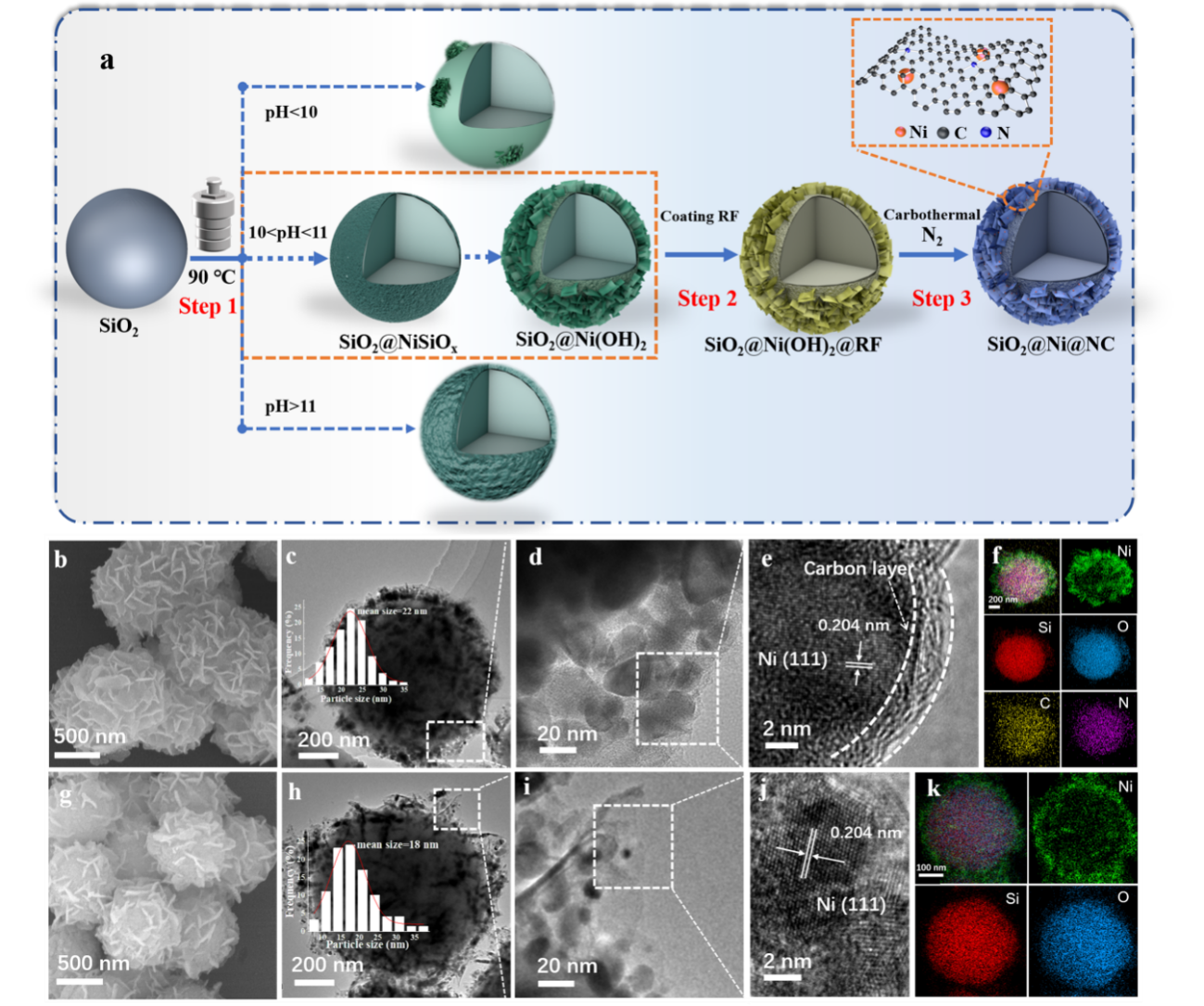
Recently, the research team led by Researcher Wang Guozhong from Institute of Solid State Physics, Hefei Institutes of Physical Science of Chinese Academy of Sciences, encapsulated metallic nickel in a nitrogen-doped carbon–silica composite (SiO2@Ni@NC) as a catalyst, which displayed good performance in vanillin hydrogenation in aqueous media. They found that it can afford 99.8% vanillin conversion and 100% 4-hydroxymethyl-2-methoxyphenol (HMP) selectivity at room temperature.
The related research results were published in Advanced Science.
Water is a readily accessible and environmentally friendly solvent. However, catalytic reactions involving water are severely limited by difficulties in stabilizing the active metal species. Studies have shown that encapsulation strategies can effectively reduce the loss of active species. The nitrogen-doped carbon (NC) layer derived from resorcinol–formaldehyde resin can enhance the affinity between the catalyst and gas molecules or organic reactants through its inherent hydrophobic properties, effectively improving the catalytic activity and stability.
In this study, the researchers prepared a nickel catalyst wrapped in a mix of nitrogen-doped carbon and silica called SiO2@Ni@NC. They used it to convert vanillin into another chemical called 4-hydroxymethyl-2-methoxyphenol (HMP) using water as solvent. This wrapped-up catalyst worked really well. Transforming almost all the vanillin into HMP at room temperature, and it could be reused five times.
The efficient catalytic performance came from the synergistic effect of active metals, nitrogen-doped carbon layer, and the silica. The silica helped spread the catalyst evenly in the water, while the carbon layer protected the metals and helped the reaction along. Tests showed that the carbon layer also helped gather the chemicals needed for the reaction.
Density functional theory (DFT) calculations confirmed the role of nitrogen-doped carbon layer in the spontaneous dissociation of H2 and elucidated the catalytic mechanism for the aqueous-phase hydrogenation of vanillin.
The carbon layer encapsulation strategies in this work provides a reference for constructing efficient and stable aqueous hydrogenation catalysts at room temperature, according to the team.

(a) Schematic illustration of the synthesis procedure for SiO2@Ni@NC; the corresponding characterization images of (b-f) SiO2@Ni@NC and (g-k) SiO2@Ni. (Image by ZOU Zidan)